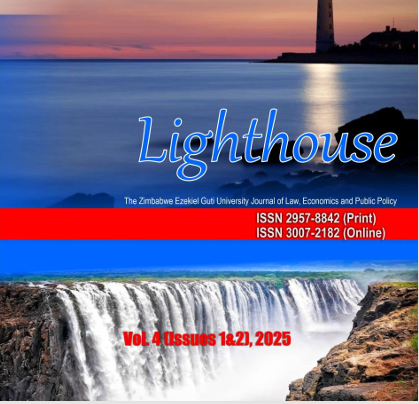Life Insurance Uptake in Zimbabwe’s Predominantly Informal Economy
DOI:
https://doi.org/10.71458/ydv7q876Keywords:
insurance density, informal sector, lag model, premium, life cycleAbstract
The study examines the factors influencing life insurance uptake in Zimbabwe‘s largely informal economy, addressing structural barriers often overlooked in conventional models. The study is relevant to Zimbabwe‘s current economic context as it highlights the structural barriers to life insurance uptake in a predominantly informal economy, offering policy insights on financial inclusion, microinsurance, and economic resilience amid high unemployment and financial instability. By integrating informal sector dynamics with economic, demographic, and institutional variables, it provides a comprehensive analysis of insurance adoption in a financially excluded environment. Using the Life Cycle Hypothesis, an autoregressive distributed lag (ARDL) model is applied to macroeconomic data from 1990 to 2022. Key determinants include informal sector size, inflation, central bank independence, per capita income, financial development, insurance literacy, age dependency, life expectancy, and unemployment, capturing both short-term fluctuations and long-term equilibrium dynamics. Findings show that larger informal sector size, higher age dependency, and increased insurance literacy reduce long-term insurance uptake, while shortterm demand rises with temporary income gains and economic uncertainty. Inflation and central bank independence have minimal impact, highlighting the need for policies tailored to informal sector dynamics.




